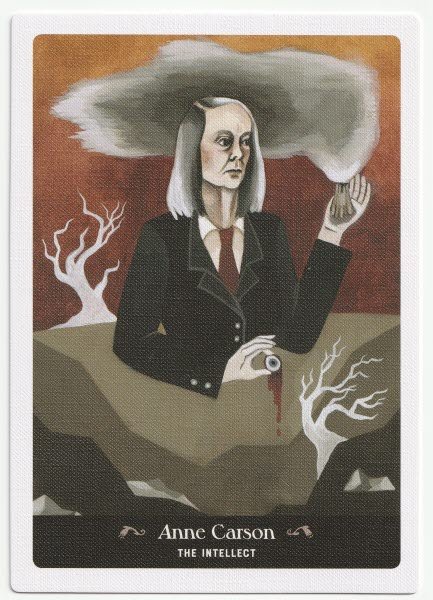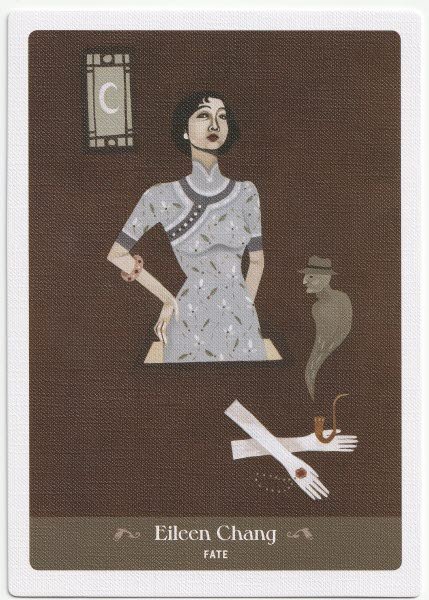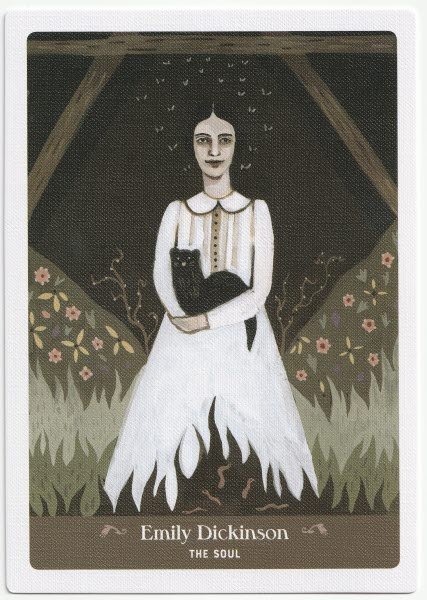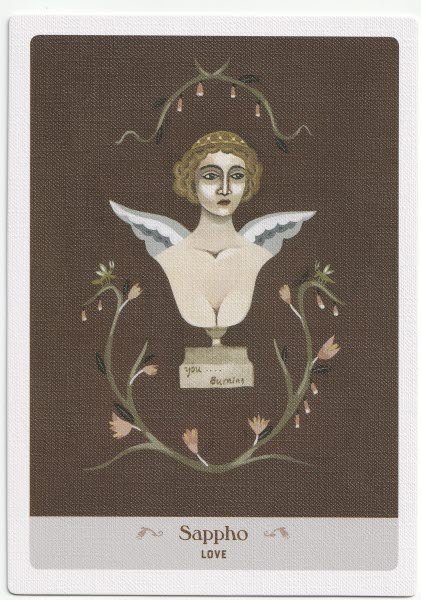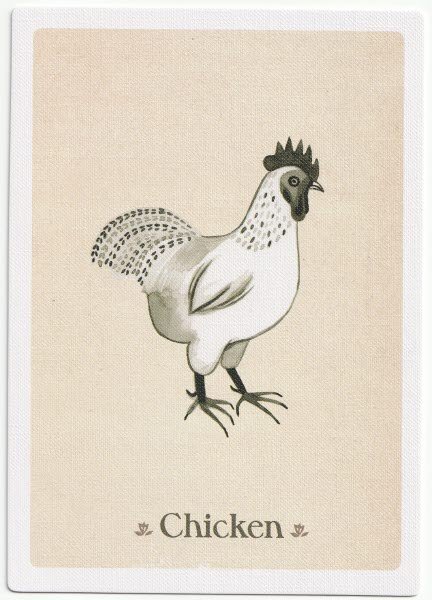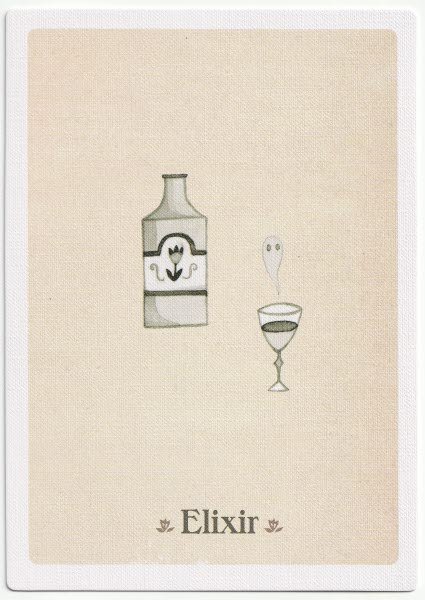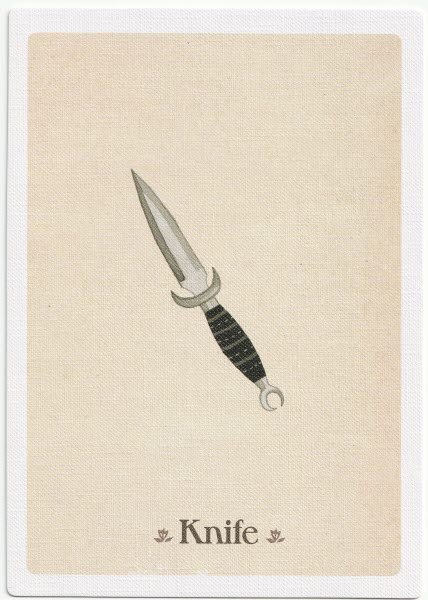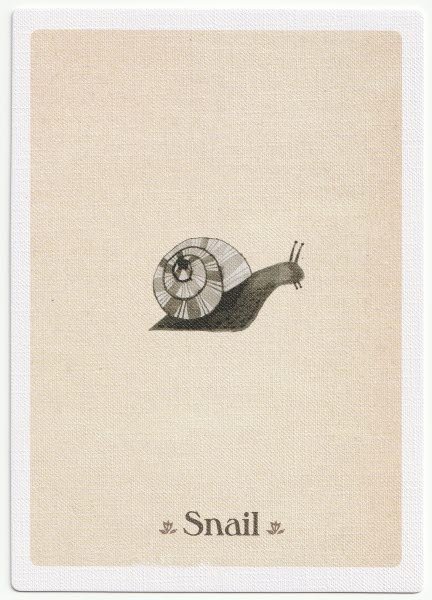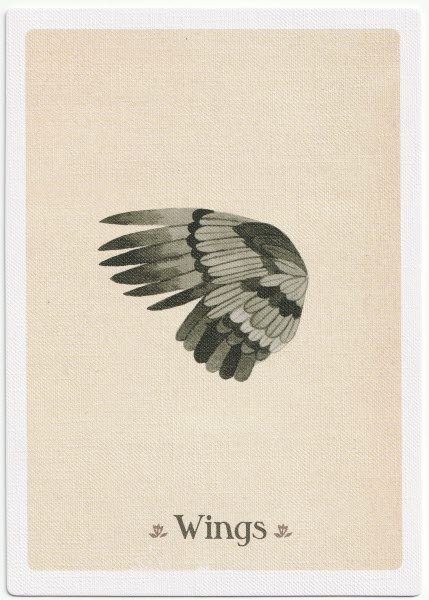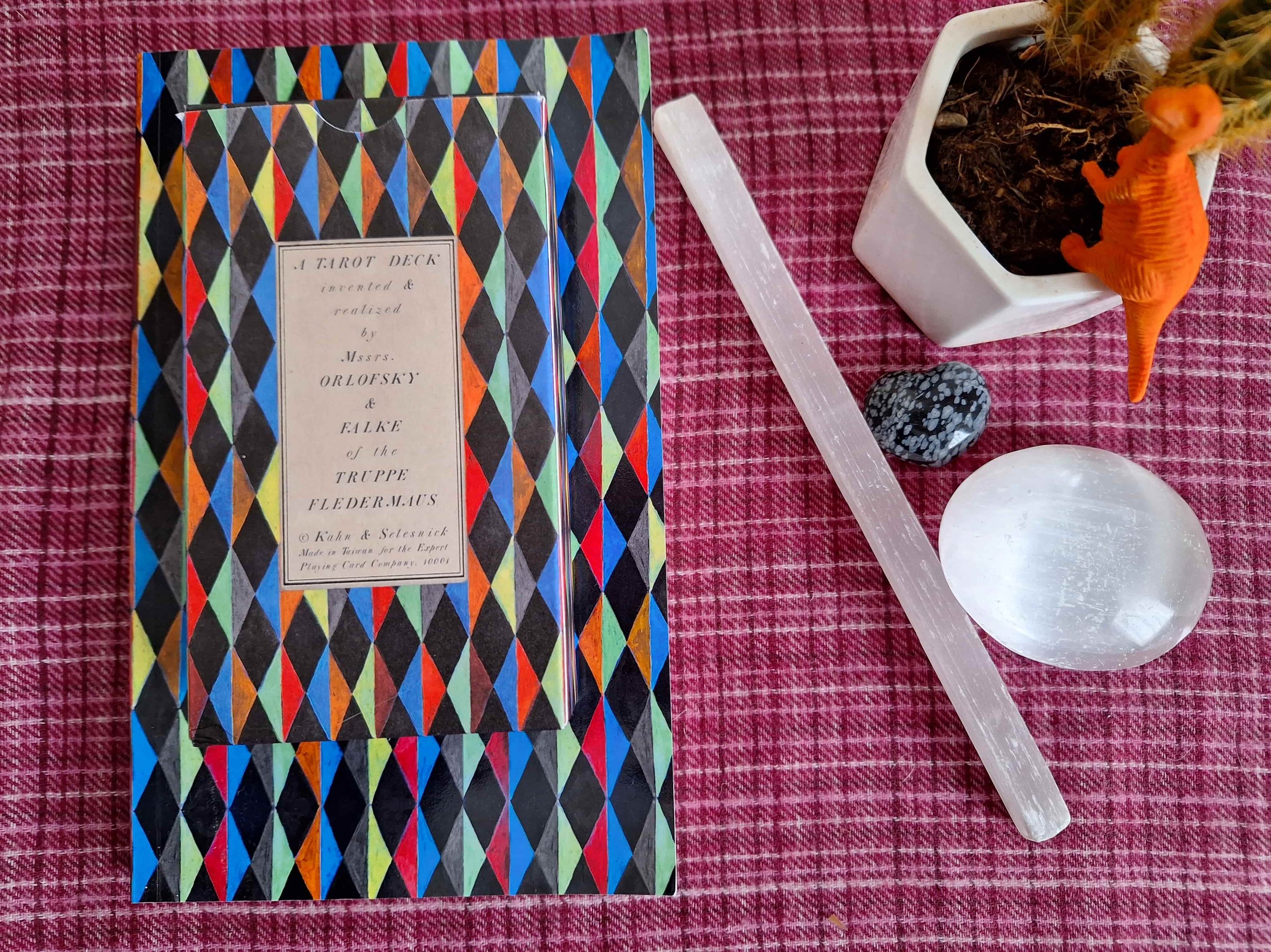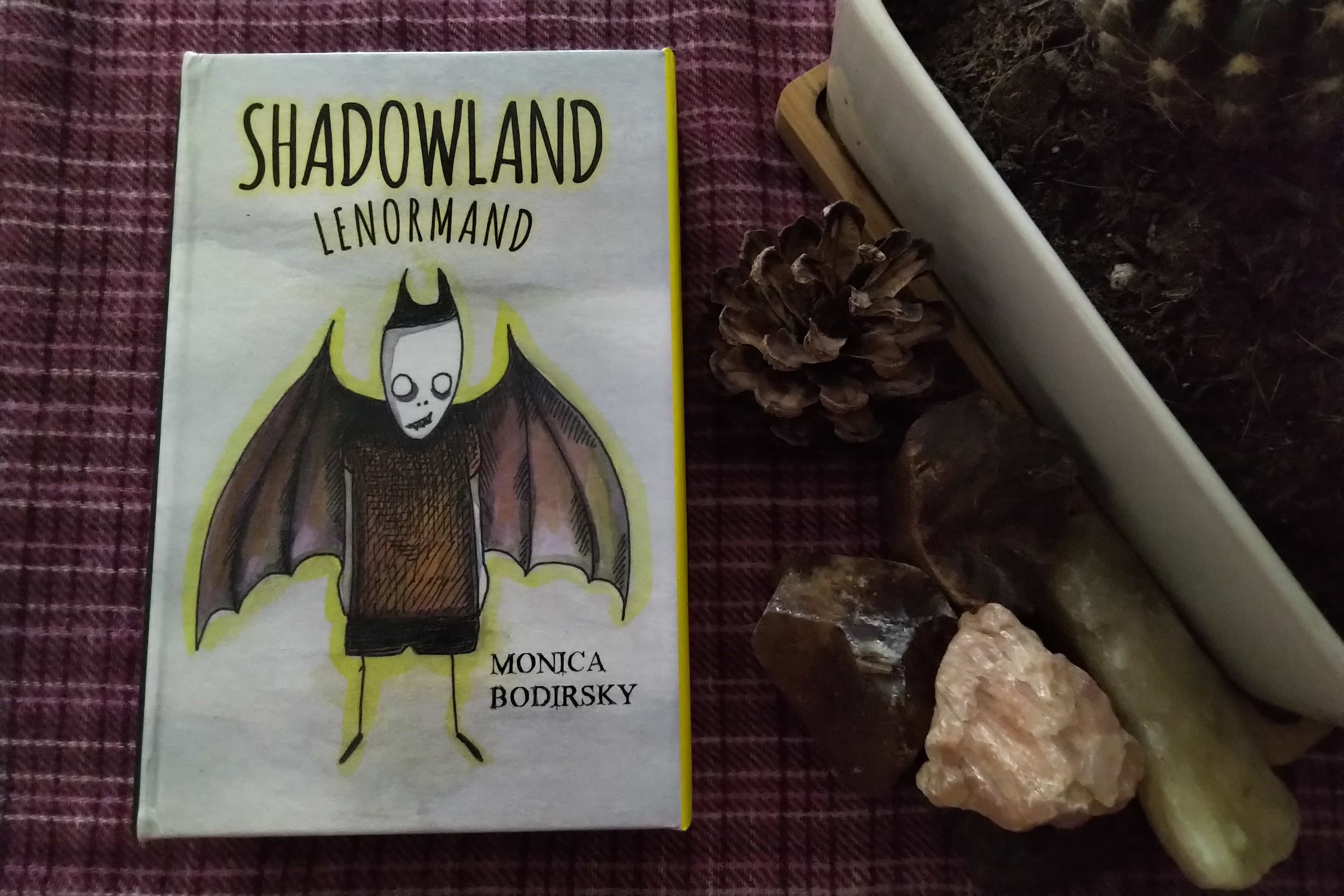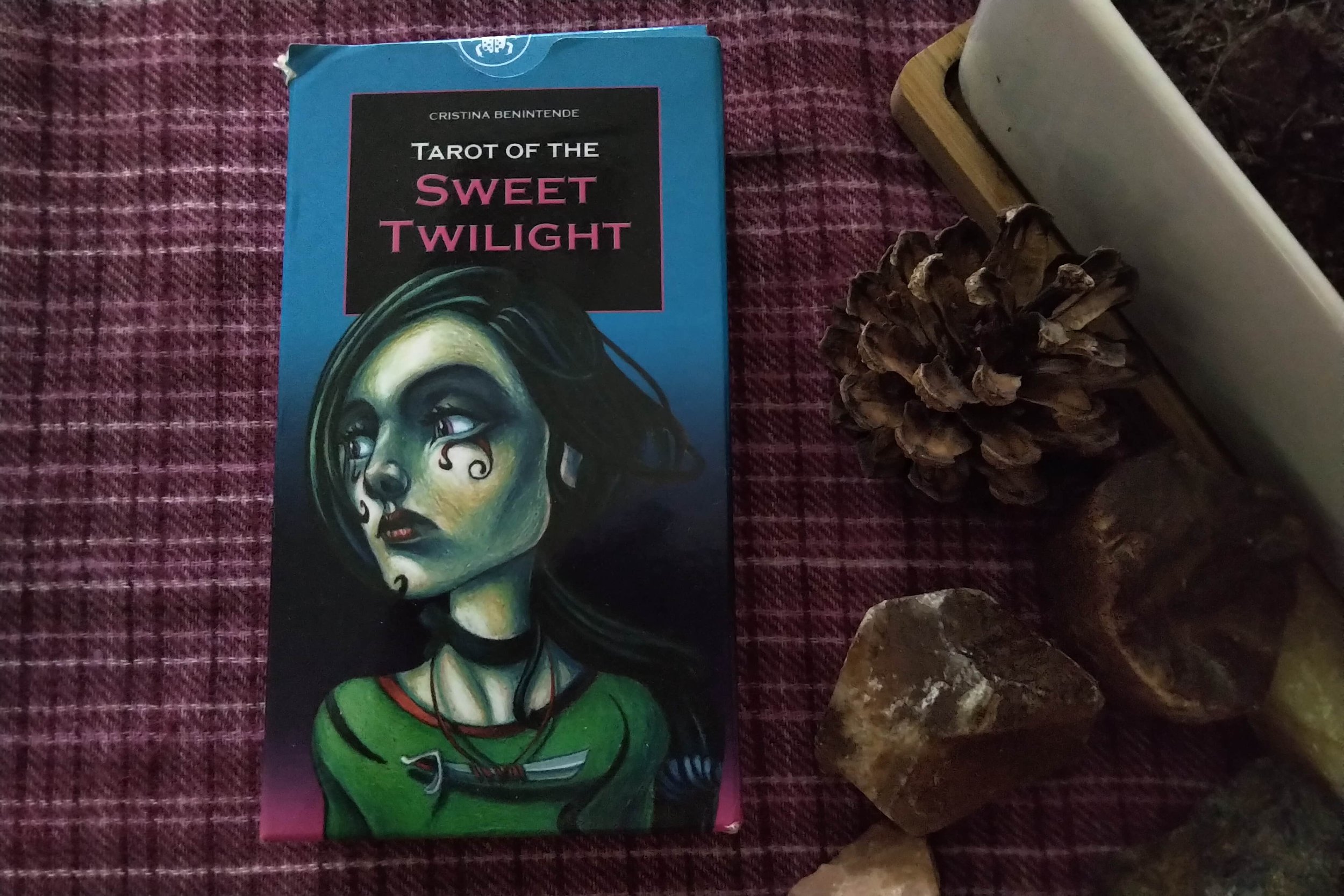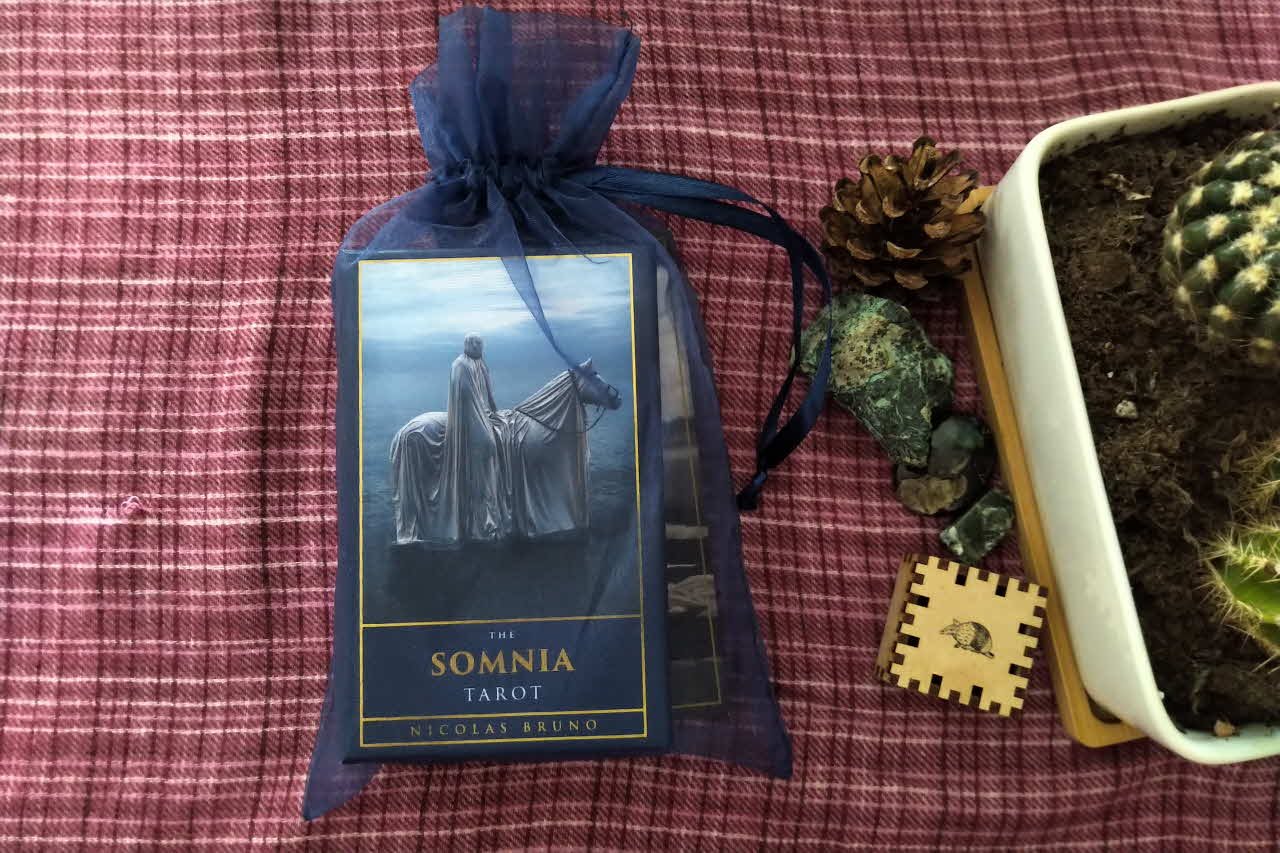The Literary Witches Oracle


I loved this deck the minute I took it out of its packaging. It comes in a sturdy box six inches tall, about 5 inches across and two inches deep. There are seventy cards and a relatively thin booklet to help help you with interpretations. Taisia Kitaiskaia and Katy Horan jointly created the oracle. It was based on the authors’ book Literary Witches: A Celebration of Magical Women Writers, which reimagines visionary women writers as witches: formidable figures of creativity and empowerment. The oracle uses thirty author portraits from the book and provides an additional forty cards based on various objects and animals. I did buy the book to use in conjunction with the oracle, and I have to say that it does provide useful bits of information. However, you will still have to work to pull out the meanings. I’m glad I bought it, but it’s not essential.
The booklet considers the object cards to be the witches’ materials. They point out that the object interpretations have been kept deliberately vague to help the person reading the cards use their imagination and intuition to interpret each meaning. Two example readings are given: the single card and a three-card spread for the past, present, and future. The deck design makes this a great go-to if you want to focus on self-development or if you’re looking for a symbolic answer to a specific question. Personally, I love the choice of objects because many are existing cues of mine. Before looking at the cards, I need to mention the smell; I don’t think they’ve been scented with anything, but it’s one of those you simply have to sniff. The card stock is good quality, non-laminated and has a textured feel. The cards are on the large size, but because I’m only looking for a couple of them at a time, it isn’t something I find off-putting.
The colours on the cards are not incredibly bold, but I think it works well with the overall theme and art style. The first randomly chosen card is Bees. from the booklet: Bees — togetherness, work, treasures. As you can see, there isn’t much to go on, so you must add your own meaning. You can find your own interpretation by looking at the dominant characteristics of the insect. Your own history with it may be relevant here; maybe you’re allergic to bee stings, or you could have a love of honey? It’s important to note we have three bees and not one — I take this to imply the worker bee aspect rather than the queen. The booklet speaks of togetherness and work; I’d extend that to mean the community, being among like-minded people and working towards a common goal. The honey could be a creative project or something to do with work. As an insect, they prefer the warmer weather and love flowers. Either could be helpful if your question relates to timing or current soul needs.
Next up is one of the witch cards. From the booklet, we have Virginia Woolf — Vision — developing a vision, innovation, limitations. Virginia Woolf (1882-1941) helped usher in a major new literary movement with her stream-of-consciousness fiction, which focuses intensely on the experience of awareness and moves fluidly among the inner lives of its characters. her personal life (child-free, sexually liberated) and incisive feminist essays were no less radical. After a lifelong struggle with mental illness, Woolf put stones in her pockets and stepped into the river near her Sussex home. The witches have a little more information, but it doesn’t give much guidance. Woolf is immersed in the water on the card, which could suggest being immersed in emotion — although her head is above the water and looks calm. Her left hand resting on the water may even be a prompt to feel the emotion and use it to fuel creative ventures. Additional totems in the card include a flowery vine emerging from a bottle in her right hand — symbolic of growth and life force. The closeness of the animal may suggest a connection to natural instincts.
Next is another totem card. The booklet says: Pond — looking inward, inspiration, uncertainty. The first thought I always have with ponds is that they’re stagnant and not free-flowing. Water as a representation of emotion would suggest stagnant emotion. But we can find all sorts of life in an average pond; the main things are insects, amphibians, and plants. I certainly see how this card is symbolic of a time of stillness and calm — we don’t see waves on a pond or boats either. How deep is the water in this pond of yours? Is the water murky or clear? Are there any birds likely to visit this pond in this imagination of yours? The appearance of ducks could suggest a time of calm in relationships, or maybe a mother duck with her babies could mean something else entirely. If you imagine mosquitoes, you could have minor irritations to contend with. Dragonflies and frogs are particularly fond of still water — do either of those hold meaning for you?
The second witch card is author Gertrude Stein. From the booklet: Gertrude Stein — Perspective — making sense, frames, new ways of seeing. Gertrude Stein (1874-1946) hosted a popular Paris salon — home to a staggering collection of modern art and famous visitors (Picasso, Hemingway, F. Scott Fitzgerald, and so on). Influenced by the radical painters she supported, Stein set out to create Cubism in writing. She stripped her poems of narrative and logic, playing instead with spatial relationships and process. She shared her life with her romantic partner and secretary, Alice B. Toklas. This card shows a couple of totems on the card; we have a flower, a feather in a cage, a spider, a portrait, and a letter. Each of these may give additional clues and meaning to your interpretation. Gertrude Stein was intensely individualistic and appeared to live life on her own terms. She was also one of the first novelists to write a coming-out story.
From the booklet: Eye — seeking answers, seeing clearly, paying attention. This one is maybe a little easier because the eyes feature strongly in most cultures. As a symbol, it can represent a wide range of meanings. Mystics often use it as a symbol of clairvoyance, and modern-day seers still use this association. The Egyptians had two significant eye symbols: the Eye of Horus was a symbol of protection to ward off evil spirits and negativity that represented the moon. The eye of Ra represented the sun and also offered protection. The evil eye amulet has been around for 5,000 years in various areas across the world, including Europe and the far East. Eyes are also an essential feature of seduction and attraction. For some, the eyes are the window to the soul; for others, they represent health and vitality. This card could indicate a need to focus, or maybe it could be stressing the need to use intelligence and rational thought. Do you need to see to believe? Do you need to guard against jealousy or ill-intent?
Another witch card. The booklet says Angela Carter — Identity — investigating identity, roles, who you are —The feminist fairy tales of Angela Carter (1940-1992), which draw on stories like “Little Red Riding Hood” and “Beauty and the Beast,” are sumptuous tapestries depicting sexual, violent scenes, ornamented with symbols and adjectives. She was fascinated by the performance of femininity, and her works often feature showgirls, trapeze artists and dolls. As a feminist, Angela Carter was a controversial figure, and her work continues to divide opinion. The upturned pair of legs with a wolf’s head catching drops of blood that flow from her chest is a curious sight. Does this suggest animalistic drives? Blood often represents the life force. The symbolic wolf has been used extensively by Jungian analyst Clarissa Pinkola Estes in her work aimed at empowering women and reconnecting them to their inner drive.
From the booklet: Spider — focus, planning, digesting. I love spiders, and I especially love the myth of Arachne. The spider in its web suggests a spider at home waiting patiently for its prey. Spiders can often represent complex patterns and indicate a highly individualised life path. They’re frequently a significant totem for anyone in a creative field and suggest a person aiming to be at the top of their game. Spiderwebs can symbolise the life path, weaving your own pattern and being in control of your destiny. At the extreme end, spider types can mimic poor Arachne and think they’re better than the gods themselves. Most cultures have myths and stories about spiders; some good, some bad. The stories often involve a moral ending of some description. Symbolically, spider suggests that patience may be needed, or maybe it’s a quality that needs to be appreciated.
The overall execution of the concept is faultless, and my pics don’t do it justice. The witch cards deserve research — if you’re unfamiliar with the life or work of one that comes up repeatedly, it will be worth your time to do a little research to see where it takes you. Many of the women were incredibly complex, and each contributed something valuable to the wider society. This is a deck I want to get to know well. I have a feeling that it’ll take a considerable amount of time. However, I feel like it’ll be worth the investment of energy.



